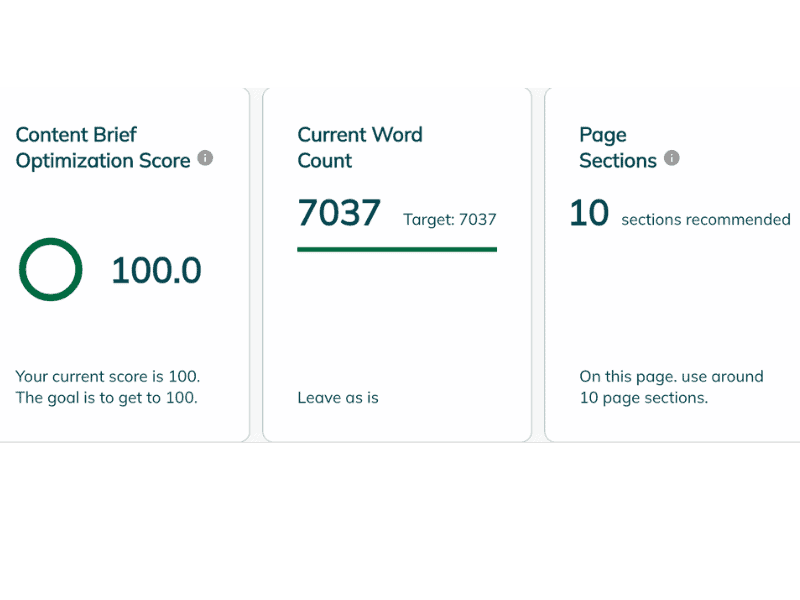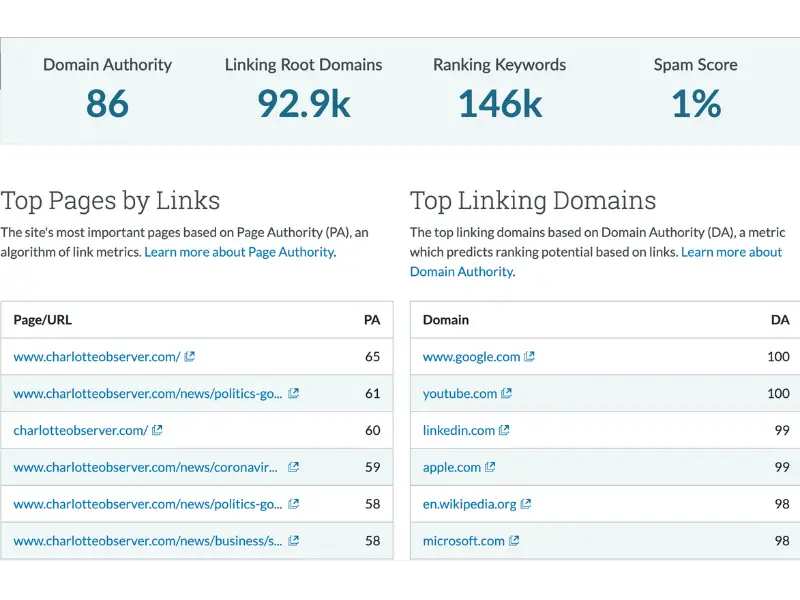To maximize the potential of search engine optimization (SEO), brands must comprehend its fundamental aspects and establish a strong foundation. This article delves into the three critical pillars of SEO basics that every brand should prioritize to attain optimal results. By effectively understanding and implementing these pillars, brands can drive organic traffic, enhance their search engine rankings, and boost their brand visibility.
What are the Key Aspects of SEO Marketing?
To succeed in SEO, one must understand the three key pillars that form the foundation of effective optimization strategies. These pillars encompass essential elements and techniques that help businesses improve their online presence and drive targeted organic traffic to their websites. Let’s explore the three main pillars of SEO and their significance in more detail:
1. On-Page Optimization
On-page optimization refers to the practices and techniques implemented directly on a website to enhance its visibility and relevance to search engines. It involves optimizing individual web pages and their elements to make them more search engine-friendly. Critical elements of on-page optimization include:
– Content: Developing high-quality, relevant, and engaging content is crucial for SEO success. To optimize content for SEO success, you need to develop high-quality, relevant, and engaging content that is structured well, includes relevant keywords, and provides value to users.
– Page Structure and Design: The structure and design of web pages play a vital role in SEO. A well-organized site with straightforward navigation helps search engines understand the content and improves user experience.
– Meta Tags: Title tags, meta descriptions, and header tags provide valuable information about a webpage to search engines. Optimizing these tags with relevant keywords and concise descriptions can significantly impact search engine rankings.
– URL Structure: Creating clean, descriptive URLs that include target keywords can improve a website’s visibility and user experience.
2. Off-Page Optimization
Off-page optimization focuses on factors that occur outside the website but still significantly impact its search engine rankings. It involves building a solid online reputation and authority through various external factors. Critical elements of off-page optimization include:
– Link Building: Acquiring high-quality backlinks from authoritative and relevant websites is a crucial aspect of off-page optimization. These links act as “votes of confidence” for search engines, indicating the credibility and relevance of the website.
– Social Signals: Social media plays a vital role in SEO by generating brand awareness, driving traffic, and increasing social signals such as likes, shares, and comments. These signals indicate to search engines that the content is valuable and engaging.
– Online Reputation Management: Maintaining a positive online reputation through customer reviews, ratings, and brand mentions helps establish trust and credibility, influencing search engine rankings.
3. Technical SEO
Technical SEO involves optimizing the technical aspects of a website to improve its crawling, indexing, and overall performance. It ensures that search engines can effectively crawl and understand a website’s content. Key elements of technical SEO include:
– Website Speed and Performance: Optimizing website speed and performance improves user experience and positively impacts search engine rankings. It involves optimizing code, compressing images, and leveraging caching techniques to achieve this.
– Mobile Friendliness: With the increasing use of mobile devices, having a mobile-friendly website is crucial for SEO. Websites that provide a seamless experience across different devices and screen sizes tend to rank higher in search results.
– Structured Data Markup: Implementing structured data markup using schema.org vocabulary helps search engines better understand and display website content, enhancing visibility in search results.
By focusing on these three core pillars of SEO – on-page optimization, off-page optimization, and technical SEO – businesses can develop a robust SEO strategy to increase their online visibility, attract targeted organic traffic, and achieve higher rankings in search engine results. Implementing these pillars with careful planning and consistent effort can significantly improve website traffic, brand exposure, and overall business growth.
Understanding the Basic Pillars of SEO: Content, Backlinks and Page-structure
To achieve effective SEO, it is essential to understand and implement three main pillars correctly: content, backlinks, and page structure. These pillars form the foundation of any successful strategy. They are crucial aspects of digital marketing that help websites rank higher in search engine results pages (SERPs) and drive organic traffic. Improving your website’s visibility and online presence relies on adequately understanding and implementing these pillars.

1. Content:
Content is considered one of the most important pillars of SEO. High-quality, relevant, and engaging content attracts visitors and signals that your website provides value to search engines. When creating content, it’s essential to consider the following aspects:
– Keyword Research: Conduct thorough research to identify relevant keywords that your target audience is searching for. Incorporate these keywords into your content to improve its visibility in search engine rankings.
– Unique and Valuable Content: Develop original, informative, and engaging content that provides value to your audience. This will increase the likelihood of visitors staying on your website longer, reducing bounce rates and potentially leading to higher conversions.
– Optimized Meta Tags: Craft compelling and relevant meta titles and descriptions for your web pages. These elements appear in search engine results and influence click-through rates.
2. Backlinks:
Backlinks, or inbound links, are links from external websites that point to your site. Search engines view backlinks as a vote of confidence, indicating that your content is reliable and authoritative. Consider the following when building backlinks:
– Quality over Quantity: Focus on acquiring backlinks from reputable and authoritative websites in your industry. A few high-quality backlinks can have a more significant impact than numerous low-quality ones.
– Natural Link Building: Engage in ethical and organic link-building practices. Avoid purchasing links or participating in link schemes, as search engines penalize such activities.
– Diverse Link Profile: Aim for a diverse range of backlinks from various sources, including social media, directories, industry-specific websites, and guest blogging opportunities.
3. Page Structure:
Page structure refers to the organization and optimization of your website’s pages. A well-structured website helps search engines understand your content better and improves the user experience. Consider the following page structure elements:
– URL Structure: Ensure your URLs are descriptive, concise, and contain relevant keywords. Use hyphens to separate words, and avoid using special characters.
– Title Tags and Headings: Optimize your title tags and headings with relevant keywords to provide search engines with a clear understanding of your page’s content.
– Internal Linking: Establishing a logical internal linking structure to help search engines navigate and understand the relationship between different pages on your site improves user experience and encourages visitors to explore more of your content. This strategy benefits search engine optimization and enhances the overall browsing experience for users.
– Mobile-Friendly Design: With the increasing use of mobile devices, it’s crucial to have a responsive website design that provides an optimal user experience on both desktop and mobile devices. Mobile-friendly sites tend to rank higher in search results.
Understanding and implementing these three pillars of SEO – content, backlinks, and page structure – will help you establish a strong foundation for your website’s search engine optimization. Creating valuable content, building high-quality backlinks, and optimizing your page structure increase your chances of ranking higher in search engine results, driving organic traffic, and achieving your digital marketing goals.
The Significance of Content in SEO: Doubling your Page Relevance
Content is undeniably one of the main pillars of search engine optimization (SEO). It is pivotal in establishing your website’s relevance and visibility on search engines like Google. Content is often referred to as the cornerstone or pillar of SEO, along with other vital factors such as links and technical optimization. Understanding and effectively utilizing the importance of content can significantly impact your website’s organic traffic and overall success in digital marketing.
1. The Three Pillars of SEO:
Regarding SEO, three core elements form the foundation of successful optimization strategies: content, links, and technical optimization. Content is the pillar that holds everything together and serves as the primary vehicle for conveying information to search engines and users alike.
2. Content as the King:
In SEO, people often refer to content as the “king.” Content drives the visibility and relevance of your website in search engine results pages (SERPs). High-quality content provides value to your audience, answers their queries, and satisfies their search intent. By consistently producing valuable and engaging content, you can establish your website as a credible source of information, attracting both search engines and users.
3. Importance of Keywords:
Keywords are the fundamental building blocks of content optimization. By conducting thorough keyword research, you can identify the specific terms and phrases your target audience uses to search for relevant information. Incorporating these keywords strategically into your content helps search engines understand the context and relevance of your pages. However, it’s crucial to maintain a balance and avoid keyword stuffing, as search engines prioritize content that provides a natural and valuable user experience.
4. Content Optimization:
Page optimization is a fundamental aspect of SEO, and content optimization is vital. By optimizing your content, you make it easier for search engines to crawl, understand, and index your pages accurately. Content optimization includes optimizing meta tags, headers, URL structures, and other on-page elements. Well-optimized content helps search engines recognize the value of your pages, increasing their chances of ranking higher in search results.
5. Link Building and Content:
Links from external websites pointing to your content are an important signal for search engines to determine the authority and relevance of your pages. Great content naturally attracts high-quality backlinks, as other websites find it valuable and worth referencing. Creating unique content that stands out can increase the likelihood of earning valuable links, ultimately boosting your website’s SEO performance.
6. Content and User Experience:
User experience (UX) is a crucial factor in SEO. Engaging and informative content satisfies users’ search queries and keeps them on your site for extended periods, reducing bounce rates. A well-structured and user-friendly website design combined with high-quality content improves the overall user experience, leading to increased engagement, higher conversion rates, and improved search engine rankings.
To summarize, content represents one of the main pillars of SEO, and we cannot overstate its significance. Creating valuable and well-optimized content can double your page relevance, attract organic traffic, and achieve better visibility on search engines. Remember to focus on providing value to your audience, incorporating relevant keywords, and optimizing your content for search engines and users. An effective content strategy can elevate your SEO marketing efforts and drive success in the competitive digital landscape.
Read about: What are the 3 main features of a quality backlink?
The Role of an SEO Team Member in Content Creation
Search engine optimization (SEO) is a crucial aspect of digital marketing that focuses on improving a website’s visibility and ranking on search engine results pages (SERPs). It involves various strategies and techniques to drive organic, targeted website traffic. One of the main pillars of SEO is content creation, which significantly enhances a website’s online presence and attracts relevant audiences.
1. Understanding the Three Pillars of SEO:
To comprehend the role of an SEO team member in content creation, one must understand the three main pillars of SEO: on-page optimization, off-page optimization, and technical SEO. These pillars establish a strong foundation for a successful SEO campaign.
a. On-Page Optimization:
On-page optimization focuses on optimizing individual web pages to rank higher and earn more relevant traffic. Critical elements of on-page optimization include keyword research, meta tags, title tags, headings, and content optimization. An SEO team member contributes by conducting keyword research to identify target keywords and incorporating them strategically into the content.
b. Off-Page Optimization:
Off-page optimization refers to activities performed outside the website to improve its search engine rankings. It mainly involves building high-quality backlinks from reputable websites, social media promotion, and online reputation management. An SEO team member may collaborate with content creators to develop link-building strategies and outreach campaigns to acquire valuable backlinks.
c. Technical SEO:
Technical SEO involves optimizing the technical aspects of a website to improve its crawlability, indexability, and overall performance. It includes tasks such as website speed optimization, mobile-friendliness, structured data markup, XML sitemaps, and canonical tags. An SEO team member can provide technical guidance to the content creation team to ensure the website’s infrastructure is search engine-friendly.
2. The Role of an SEO Team Member in Content Creation:
In content creation, an SEO team member plays a pivotal role in aligning the content strategy with SEO best practices. Here are some key responsibilities they undertake:
a. Keyword Research and Integration:
Keyword research is essential for identifying the terms and phrases that users search for. An SEO team member conducts keyword research to find relevant and high-volume keywords related to the website’s topic. They then collaborate with content creators to seamlessly integrate these keywords into the content, ensuring its relevance and optimization.
b. Content Optimization:
An SEO team member assists content creators in optimizing various elements of the content, including headings, meta descriptions, URL structures, and image alt tags. They ensure that the content follows best practices for readability, user experience, and search engine visibility. By optimizing the content, they aim to improve its chances of ranking higher on SERPs.
c. Link Building Strategies:
Building high-quality backlinks is crucial for off-page optimization and enhancing a website’s authority. An SEO team member works closely with content creators to develop content that naturally attracts links from authoritative sources. They may also engage in outreach campaigns to promote the content and acquire valuable backlinks.
d. Performance Tracking and Analysis:
After publishing content, an SEO team member monitors its performance using analytics tools. They track key metrics such as organic traffic, user engagement, bounce rate, and keyword rankings. Based on the data, they analyze the content’s success and identify opportunities for improvement or further optimization.
3. The Importance of Collaboration:
Effective collaboration between SEO team members and content creators is vital for achieving optimal results. By working together, they can ensure that the content aligns with SEO objectives while maintaining its value and relevance for the target audience. Regular communication, sharing of insights, and knowledge exchange between these teams can lead to the creation of high-quality content that drives organic traffic and achieves
Read about: What does it mean when a website is monetized?
Links Still Primary For Authority

SEO experts have long recognized links as a fundamental element of SEO. Search engines like Google view them as critical indicators of a website’s credibility, popularity, and relevance. When other reputable websites link back to your pages, they provide a vote of confidence, essentially vouching for your content and boosting your website’s authority.
Why are links still considered one of the most important pillars of SEO? Let’s explore their significance and role in driving organic traffic and enhancing your online presence.
1. Building Authority: Links act as virtual endorsements for your website. When reputable and authoritative websites link to your content, search engines interpret these links as validations of your website’s trustworthiness. This process helps establish your site as an authoritative source within your industry or niche.
2. Enhanced Visibility: Search engines use links to discover new content and determine the relevance and popularity of your web pages. When your website has a network of quality inbound links, the presence of these links increases the chances of search engines finding and indexing your pages. Quality inbound links lead to improved visibility in search engine results pages (SERPs) and increase the likelihood of attracting organic traffic.
3. Referral Traffic: Besides boosting your website’s visibility, links drive direct referral traffic. When users find a link to your website on another platform or website they trust, they are more likely to click through and explore your content. The increase in referral traffic can make valuable visitors genuinely interested in your offer.
4. Link Diversity: It’s essential to have a diverse link profile consisting of internal and external links. Internal links help search engines navigate your site and establish the hierarchy and structure of your content. External links from authoritative websites provide a valuable signal of your website’s credibility and relevance.
5. Quality over Quantity: While the number of links pointing to your website is important, the quality of those links carries even greater weight. Search engines prioritize high-quality links from reputable websites over many low-quality or spammy links. Focus on acquiring links from trusted sources within your industry to ensure the best possible impact on your SEO efforts.
6. Link-Building Strategies: Implementing effective link-building tactics is crucial for success. It involves outreach to relevant websites, creating compelling content that naturally attracts links, guest posting on authoritative platforms, and fostering relationships with industry influencers. A well-executed link-building strategy can significantly improve your website’s visibility and authority.
Overall, while SEO encompasses various elements and strategies, links remain one of the primary pillars for establishing authority and driving organic traffic. Building a solid link profile through high-quality and diverse links can enhance your website’s visibility, attract valuable referral traffic, and strengthen your online presence. Embrace the power of links as a fundamental aspect of your SEO efforts, and watch as your website climbs the ranks of search engine results.


